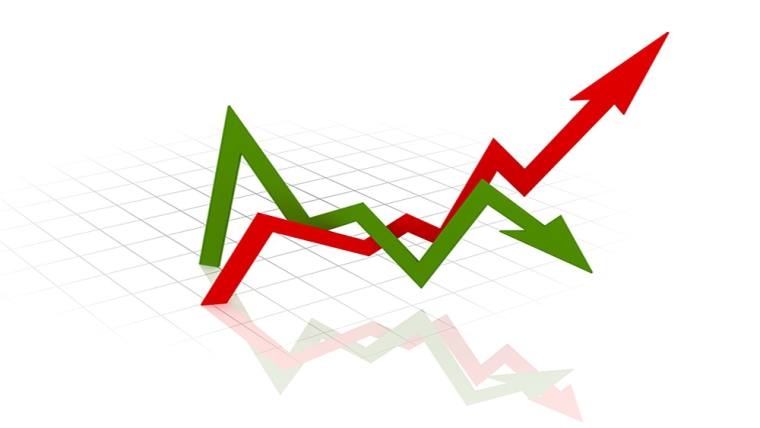
The market has calmed down following yesterday’s post-Powell testimony move. Still the US 2s10s yield curve has inverted further to minus 110bps, with slightly higher short rates and lower long-term rates, the 10-year at 3.95%. US equities are flat, while the USD has fallen slightly overnight. The NZD sits just over 0.61 after falling below that mark near the NZ close.
Overnight, Fed Chair Powell faced another session in front of lawmakers where he largely repeated the message we reported on yesterday. He diverged ever so slightly from yesterday’s script prefacing the comment on increasing the pace of hikes which depended on upcoming data releases with “If – and I stress that no decision has been made on this…”. Non-farm payrolls data at the end of the week and next week’s CPI data remain the critical releases ahead of the March FOMC meeting.
Following yesterday’s testimony, Citigroup joined Goldman Sachs in predicting that the FOMC would uplift its rate hike to 50bps at the March meeting in a fortnight, from 25bps. Fed fund futures currently price a 42bps hike, up 1bp on the day and well up from the 31bps level earlier in the week. Not long after we went to press yesterday the 2-year Treasury yield broke up through the 5% mark for the first time since 2007. It went on to peak at 5.08% just after the NZ market close, and it currently sits at 5.05%. The 10-year rate has fallen from the 4% rate at the NZ close, down to 3.95%. The 2s10s curve has inverted further to a fresh 40+-year extreme of minus 110bps.
US second-tier labour market data were stronger than expected. ADP private payrolls rose 242k, but the survey has been an unreliable guide to the more important non-farm payrolls figure due at the end of the week, where expectations sit at 225k. The JOLTs report showed 10.8m vacancies, seeing the jobs-per-unemployed ratio nudge down from 2.0 to 1.9, still much too-high for comfort. Powell has previously said he wants to see this figure closer to 1. The quits rate fell to a near 2-year low of 2.5%, consistent with an easing of labour market pressures.
The second estimate of Euro area GDP for Q4 was revised down from 0.1% q/q to 0.0%, as expected, consistent with a very soft economy at the end of last year but the region looks to have avoided recession.
The Bank of Canada left its policy rate at 4.5%, a rare “pause” in the tightening cycle that we have seen so far from the major central banks, but consistent with its prior policy guidance. The bias to tighten remained, with the Bank repeating the line that it is prepared to increase the policy rate further if needed. While it noted the labour market remains very tight, “the latest data remains in line with the Bank’s expectation that CPI inflation will come down to around 3% in the middle of the year”, adding it will need to come down further. The market prices another rate hike this cycle but not until well into the year.
CAD has been the weakest of the majors overnight, being the only major currency to fall against the USD, down slightly with USD/CAD closing in on 1.38. Currency moves have been modest overall. The NZD sits just over 0.61 after falling to a fresh low around 0.6085 near 5pm local time. The AUD fell below 0.6570 and currently sits just under 0.66. There have been insignificant moves in the NZD crosses.
RBA Governor Lowe followed up Tuesday’s less hawkish policy guidance with a speech that went into more detail.
He was open minded about a possible pause in the tightening cycle next month; it would depend on all the key data releases ahead of that meeting collectively making a case for pausing. There was little market reaction to the speech.
NZ rates were lower on the open yesterday, a reaction to the RBA’s softer statement that came after the prior close, but rates headed higher thereafter, led by the short end as US Treasury yields rose through the session. The 2-year swap rate hit the 5.5% mark for the first time this cycle and finished the day up 9bps at 5.54%, while the 10-year rate rose by only 4bps to 4.75%. NZGBs also showed a flattening bias, with the 2-year rate up 7bps, the 10-year rate little changed and ultra-long yields down 2bps. OIS pricing rose well up through 5.5%, with the peak OCR rate expected to be just over 5.6%. We see this as an added risk premium to the curve, due to global forces, than a strict reflection of where the market sees the OCR.
In the day ahead, NZ electronic card transactions data are released with some uncertainty about how they fared in February after the apparent 3.3% m/m gain in January. China inflation data and US jobless claims data round out the calendar.

We welcome your comments below. If you are not already registered, please register to comment.
Remember we welcome robust, respectful and insightful debate. We don't welcome abusive or defamatory comments and will de-register those repeatedly making such comments. Our current comment policy is here.